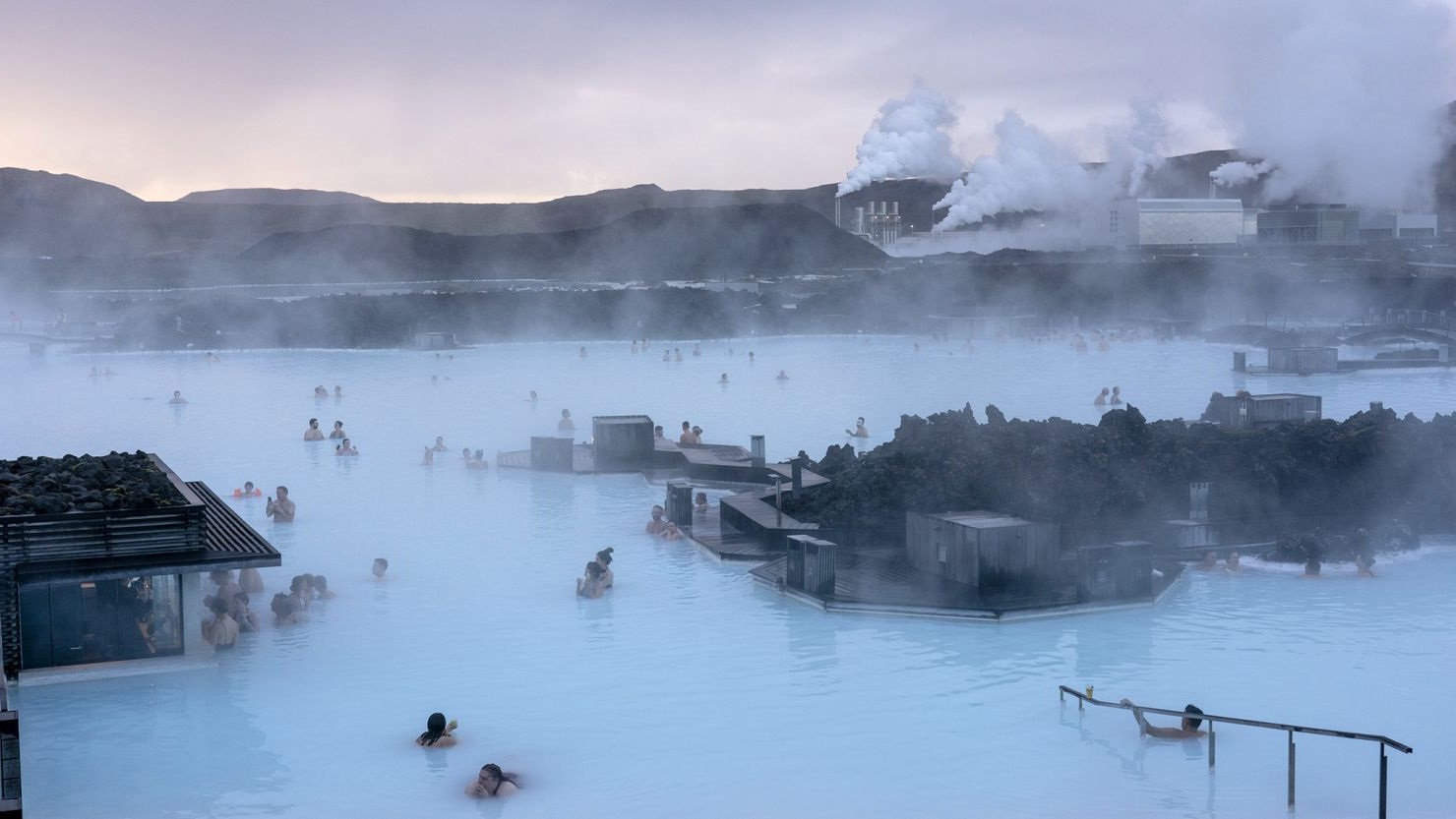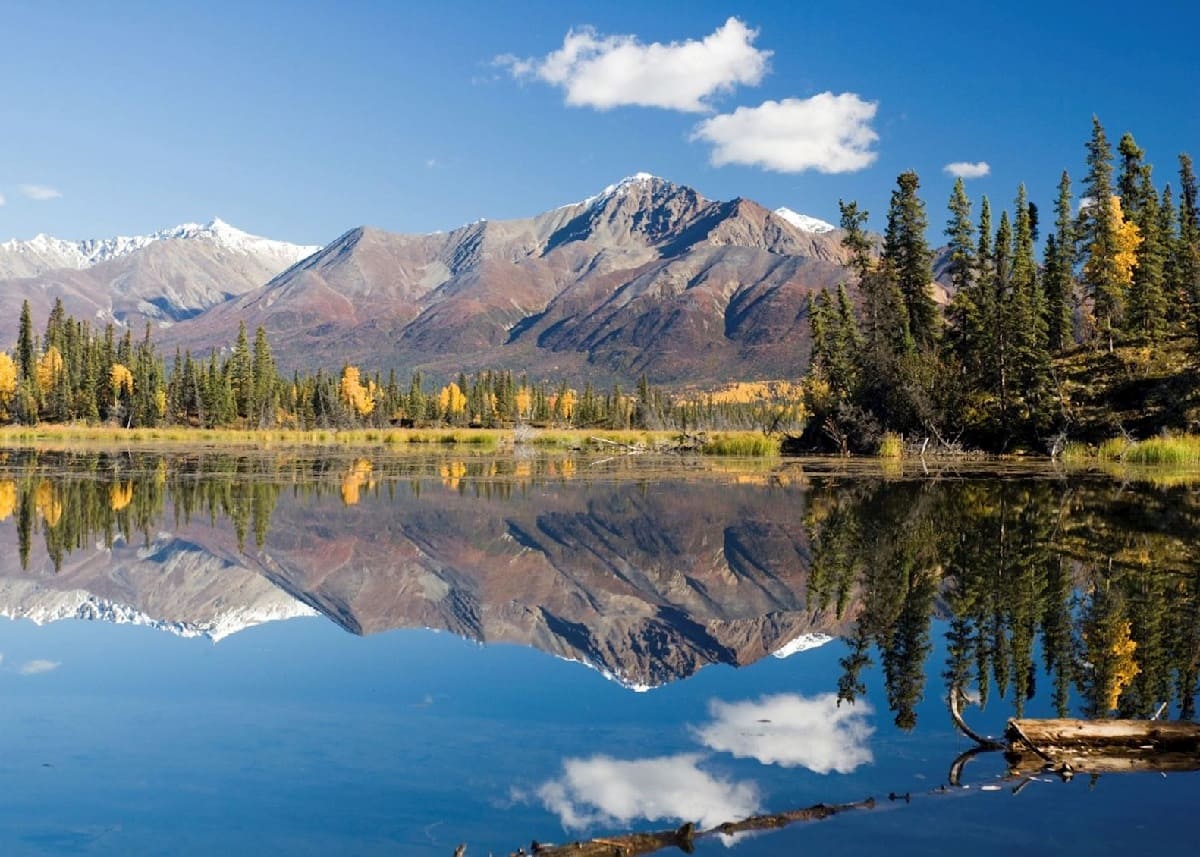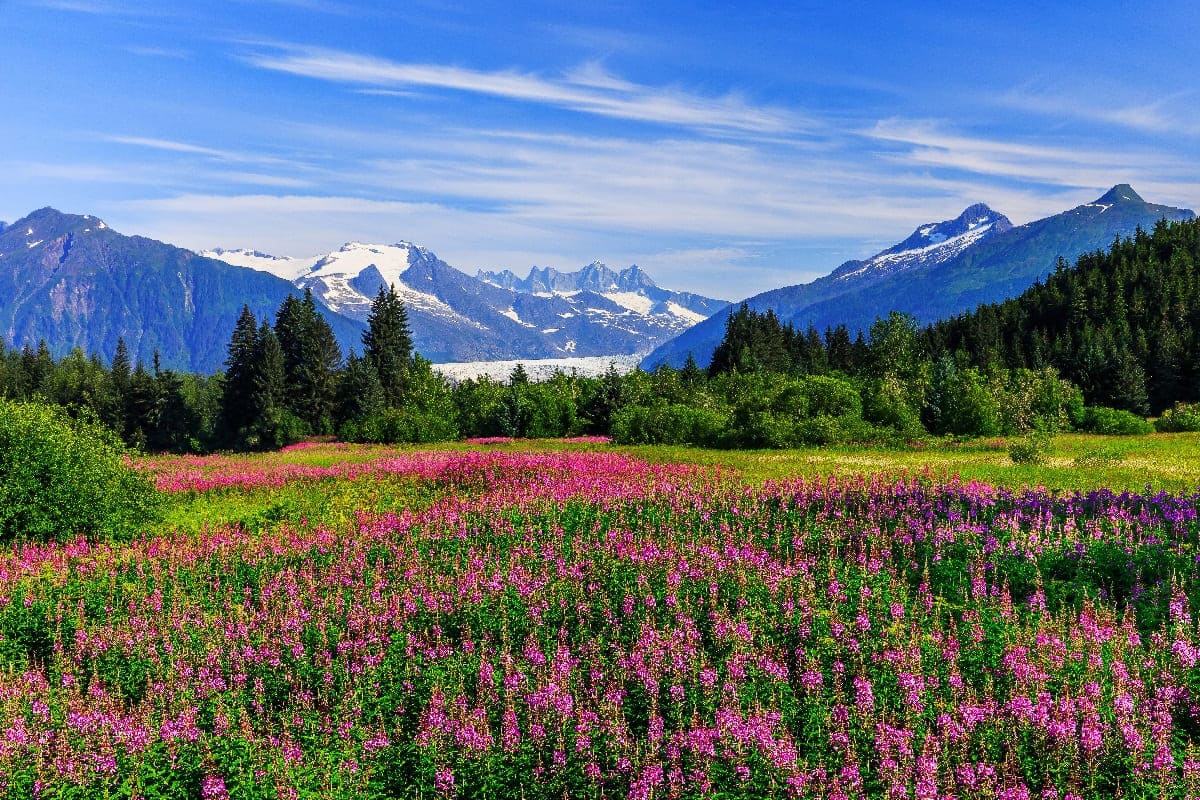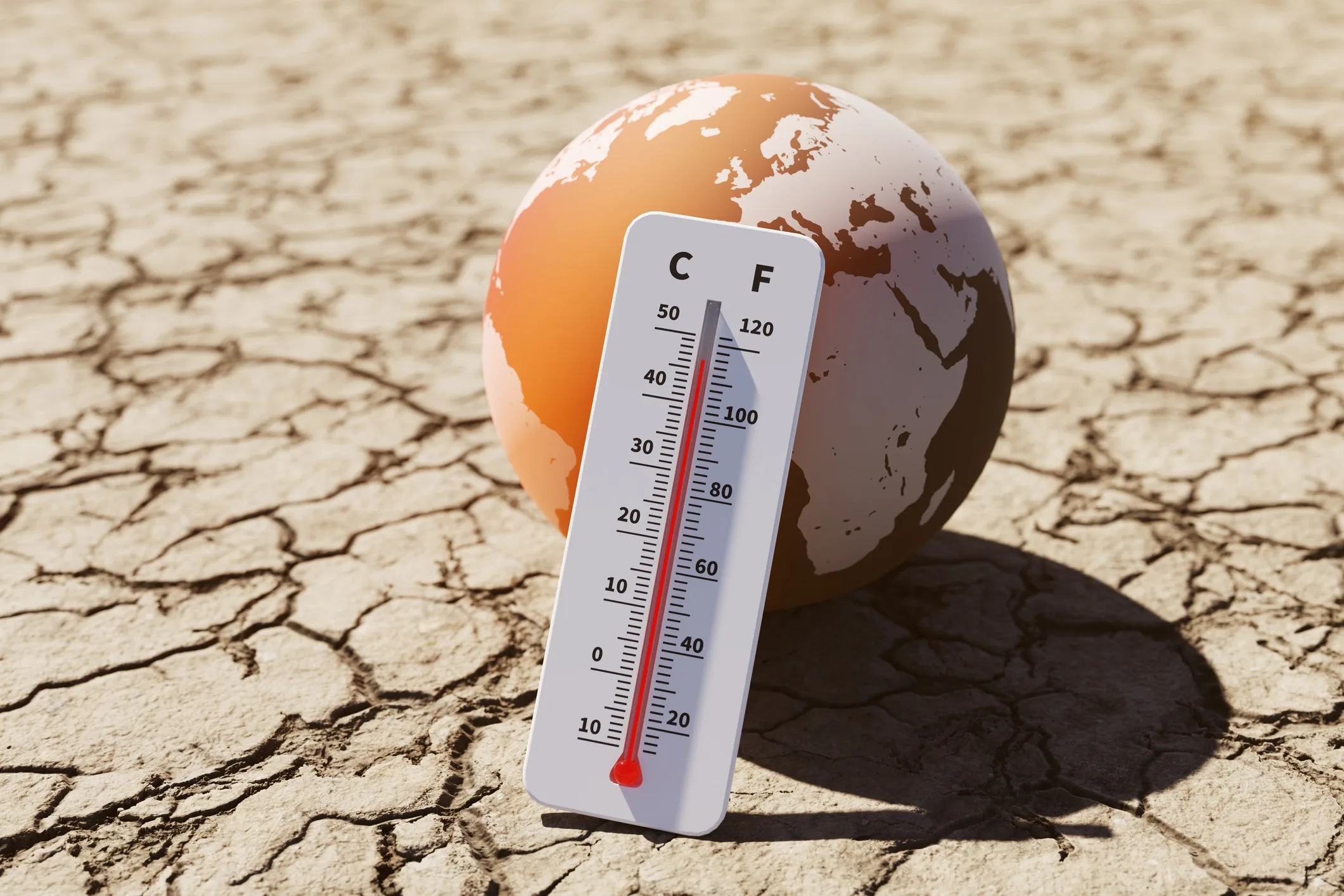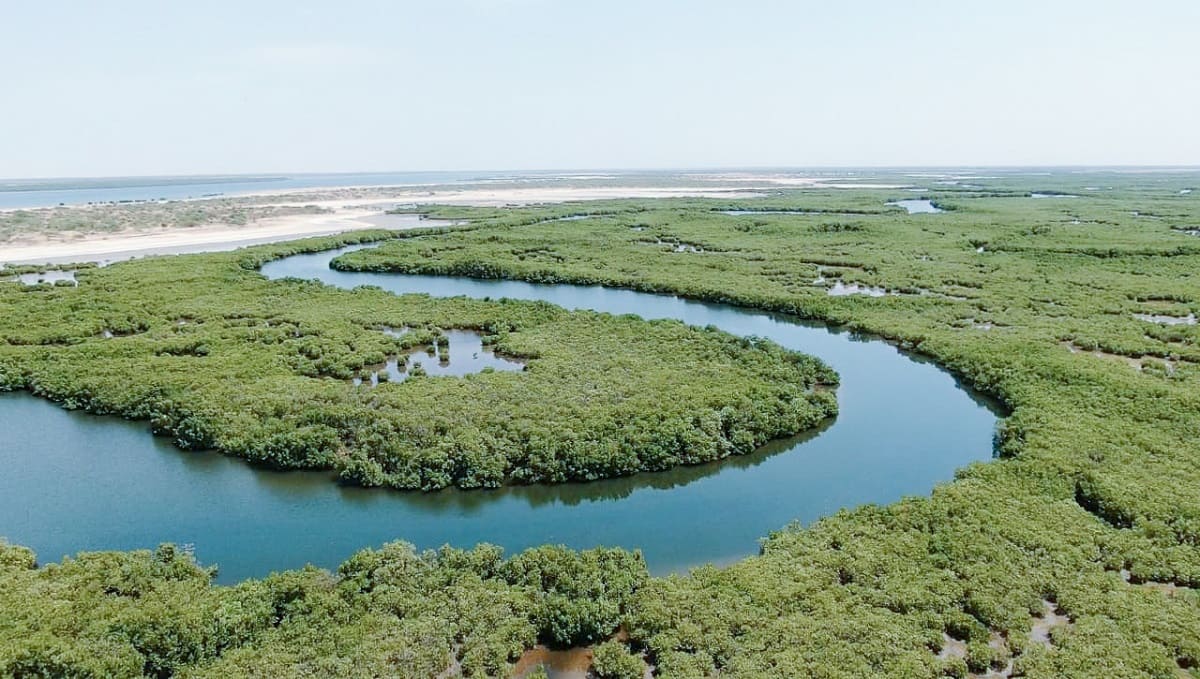Home>Weather and Climate>Monthly Temperature In Alaska: A Comprehensive Guide
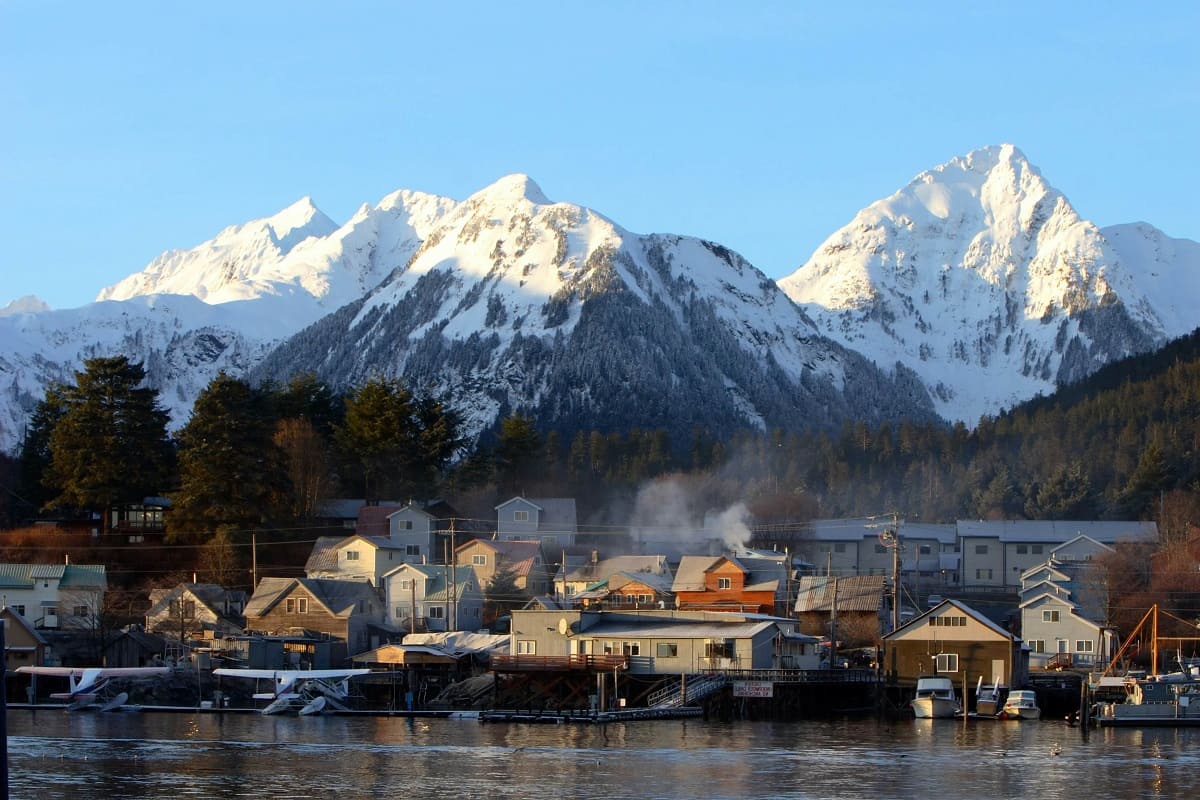

Weather and Climate
Monthly Temperature In Alaska: A Comprehensive Guide
Published: March 2, 2024
Discover the monthly temperature variations in Alaska with our comprehensive guide. Learn about the weather and climate patterns throughout the year. Explore now!
(Many of the links in this article redirect to a specific reviewed product. Your purchase of these products through affiliate links helps to generate commission for Temperatures.com, at no extra cost. Learn more)
Table of Contents
Introduction
Welcome to the breathtaking world of Alaska, where the majestic landscapes are shaped by the ebb and flow of its monthly temperatures. Nestled in the northernmost part of the United States, Alaska boasts a climate that is as diverse as it is captivating. From the snow-capped peaks of the Alaska Range to the lush greenery of the Tongass National Forest, the monthly temperature variations in Alaska play a pivotal role in shaping the state's natural beauty and ecological balance.
As we delve into the intricate tapestry of Alaska's climate, we will unravel the factors that influence its monthly temperature patterns, explore the impact of these fluctuations on wildlife and ecosystems, and gain insight into how humans have adapted to the dynamic temperature changes. Whether you're a nature enthusiast, a climate aficionado, or simply curious about the wonders of Alaska, this comprehensive guide will illuminate the nuances of Alaska's monthly temperature and its profound influence on the state's natural and human ecosystems.
Join us on this enlightening journey as we navigate through the intricate web of Alaska's monthly temperature variations, uncovering the secrets of its climate and the profound impact it has on the state's diverse ecosystems. Let's embark on this adventure to gain a deeper understanding of the monthly temperature dynamics that shape the natural wonders of Alaska.
Understanding Alaska's Climate
Alaska's climate is a captivating tapestry woven with diverse patterns of temperature, precipitation, and weather phenomena. Spanning over 660,000 square miles, Alaska's vast expanse encompasses a wide range of climatic zones, from the frigid Arctic tundra in the north to the temperate rainforests of the southeast. The state's climate is profoundly influenced by its high-latitude location, proximity to the Arctic Circle, and its extensive coastline along the North Pacific Ocean and the Bering Sea.
The unique geography of Alaska contributes to the complexity of its climate. The Alaska Range, which runs across the southern part of the state, acts as a barrier to weather systems, creating distinct microclimates on either side. The coastal areas experience a maritime climate, characterized by relatively milder temperatures and higher precipitation, while the interior regions endure a more extreme continental climate with greater temperature differentials between seasons.
Alaska's climate is also shaped by the vast expanse of its wilderness, including glaciers, mountains, and forests, which play a crucial role in regulating temperature and precipitation patterns. The state's proximity to the Arctic Circle results in dramatic variations in daylight throughout the year, with the famous phenomenon of the midnight sun in summer and the polar night in winter.
The interaction between land, sea, and ice exerts a profound influence on Alaska's climate. The North Pacific and Bering Sea are vital sources of moisture and energy, fueling the intense storms that sweep across the region. The presence of sea ice in the Arctic Ocean and the Bering Sea also influences temperature patterns, as it reflects sunlight and affects ocean currents, which in turn impact the climate of coastal areas.
Alaska's climate is a dynamic and intricate tapestry, shaped by a myriad of factors that converge to create a rich and diverse array of weather patterns. Understanding the nuances of Alaska's climate is essential for appreciating the state's natural beauty, ecological diversity, and the profound impact of its monthly temperature variations on the intricate web of life that thrives within its borders.
Factors Affecting Monthly Temperature
The monthly temperature variations in Alaska are influenced by a multitude of factors, each playing a crucial role in shaping the state's climate. These factors encompass a complex interplay of geographical, atmospheric, and oceanic elements that contribute to the dynamic temperature patterns observed throughout the year.
-
Latitude and Geographic Location: Alaska's high-latitude position significantly impacts its monthly temperature variations. The state spans a vast expanse from the temperate rainforests of the southeast to the Arctic tundra in the north. This wide latitudinal range results in pronounced differences in solar radiation and daylight duration, leading to distinct temperature patterns across various regions.
-
Oceanic and Atmospheric Circulation: The interaction between the North Pacific Ocean and the Bering Sea, coupled with atmospheric circulation patterns, exerts a profound influence on Alaska's monthly temperatures. The warm ocean currents from the south contribute to milder temperatures along the coast, while the cold air masses originating from the Arctic and interior regions bring frigid temperatures during winter.
-
Topography and Elevation: Alaska's diverse topography, characterized by mountain ranges, plateaus, and coastal plains, plays a pivotal role in shaping monthly temperature variations. The Alaska Range acts as a barrier to weather systems, leading to significant temperature differentials between the coastal and interior regions. Additionally, higher elevations experience cooler temperatures due to the lapse rate, resulting in distinct temperature gradients across the state.
-
Sea Ice and Glacial Cover: The presence of sea ice in the Arctic Ocean and the Bering Sea, along with the extensive glacial cover in Alaska, influences monthly temperature patterns. Sea ice reflects sunlight, impacting local albedo and energy absorption, while glacial meltwater contributes to cooling effects in nearby areas, influencing temperature dynamics in the region.
-
Weather Systems and Storm Tracks: Alaska's climate is shaped by the movement of weather systems and storm tracks across the region. Intense storms originating from the North Pacific Ocean bring significant precipitation and temperature fluctuations, particularly along the coastal areas, impacting the monthly temperature patterns in these regions.
-
Human Activities and Urbanization: Human activities, including urbanization and industrialization, can also influence monthly temperature variations in localized areas. Urban heat islands, created by human infrastructure and activities, can lead to higher temperatures in urban centers compared to surrounding rural areas, contributing to localized temperature anomalies.
These factors collectively contribute to the intricate tapestry of monthly temperature variations observed across Alaska, shaping the state's climate and influencing the natural ecosystems and human communities that thrive within its borders. Understanding these diverse influences is essential for comprehending the dynamic nature of Alaska's monthly temperature patterns and their far-reaching impact on the state's environment and inhabitants.
Average Monthly Temperature in Alaska
Alaska's average monthly temperature exhibits a remarkable diversity, reflecting the state's vast geographical expanse and complex climatic influences. The seasonal temperature variations in Alaska are characterized by distinct patterns, with each month offering a unique glimpse into the state's climatic tapestry.
In January, Alaska experiences its coldest average monthly temperatures, with the interior regions and northern areas enduring frigid conditions. The average temperatures plummet well below freezing, often reaching subzero levels, shaping a winter landscape adorned with pristine snowscapes and frozen vistas. The prolonged darkness during this month contributes to the persistence of cold temperatures, creating an ethereal winter wonderland across the state.
As the transition to February unfolds, Alaska begins to witness subtle shifts in its average monthly temperatures. While the cold grip of winter remains palpable, especially in the interior and northern regions, coastal areas experience slightly milder conditions. The gradual lengthening of daylight hours initiates a gradual thaw, signaling the onset of a gradual transition towards spring.
March heralds the arrival of the transitional phase between winter and spring, with Alaska's average monthly temperatures reflecting this seasonal shift. The interior regions witness a gradual warming trend, accompanied by the emergence of thawing landscapes and the onset of springtime activities. Coastal areas experience a more pronounced moderation in temperatures, as the maritime influence contributes to milder conditions and the gradual retreat of winter's icy embrace.
April marks a significant turning point in Alaska's average monthly temperatures, signaling the advent of spring across the state. The interior regions undergo a remarkable transformation, with temperatures rising steadily and the landscape awakening from its winter slumber. Coastal areas bask in the milder temperatures, as the burgeoning greenery and blossoming flora herald the arrival of the vibrant spring season.
May ushers in a period of burgeoning warmth and vitality, as Alaska's average monthly temperatures continue to ascend. The interior regions experience a surge in temperatures, fostering the proliferation of flora and the resumption of outdoor activities. Coastal areas embrace the arrival of spring in full splendor, with balmy temperatures and the rejuvenation of coastal ecosystems painting a picturesque tableau of natural abundance.
June marks the onset of summer in Alaska, with the average monthly temperatures reflecting the state's transition to a season of warmth and vitality. The interior regions bask in the balmy embrace of summer, with temperatures soaring to comfortable levels and the landscape adorned with lush greenery. Coastal areas experience the peak of the maritime influence, enjoying mild temperatures and the enchanting spectacle of the midnight sun.
July represents the pinnacle of summer in Alaska, with the average monthly temperatures reaching their zenith. The interior regions revel in the warmth of summer, fostering a flourishing tapestry of flora and fauna. Coastal areas experience the full splendor of the maritime climate, with mild temperatures and the vibrant interplay of land and sea creating a captivating coastal ambiance.
August witnesses the gradual transition from summer to early autumn, as Alaska's average monthly temperatures begin to exhibit subtle signs of moderation. The interior regions undergo a gradual cooling trend, signaling the onset of the autumnal transformation. Coastal areas maintain their mild temperatures, offering a seamless transition from the warmth of summer to the crisp allure of early autumn.
September marks the advent of autumn in Alaska, with the average monthly temperatures reflecting the state's transition to a season of vibrant foliage and atmospheric transformation. The interior regions embrace the onset of autumn, with temperatures exhibiting a gradual decline and the landscape adorned with the resplendent hues of fall foliage. Coastal areas experience a harmonious blend of mild temperatures and the captivating spectacle of autumnal coastal landscapes.
October heralds the peak of autumn in Alaska, with the average monthly temperatures reflecting the state's embrace of the vibrant fall season. The interior regions witness a significant cooling trend, as temperatures descend and the landscape undergoes a breathtaking metamorphosis. Coastal areas maintain their mild temperatures, offering a captivating juxtaposition of autumnal splendor against the backdrop of coastal landscapes.
November marks the transition from autumn to winter in Alaska, with the average monthly temperatures signaling the onset of the seasonal shift. The interior regions experience a notable cooling trend, as temperatures plummet and the landscape prepares for the arrival of winter. Coastal areas exhibit a gradual moderation in temperatures, as the maritime influence tempers the onset of winter's chill.
December heralds the arrival of winter in full force, with Alaska's average monthly temperatures reflecting the state's embrace of the winter season. The interior regions endure frigid temperatures, as the landscape becomes cloaked in a pristine blanket of snow and ice. Coastal areas witness a gradual cooling trend, as the maritime influence contributes to milder conditions, creating a captivating juxtaposition of winter's allure against the coastal backdrop.
Alaska's average monthly temperatures offer a captivating glimpse into the state's dynamic climatic tapestry, showcasing the seasonal ebb and flow of temperature variations that shape the natural rhythms of the Last Frontier. From the frigid embrace of winter to the vibrant vitality of summer, each month paints a vivid portrait of Alaska's ever-changing climate, inviting us to witness the mesmerizing interplay of temperature dynamics that define the state's natural splendor.
Variability in Monthly Temperature
The monthly temperature variability in Alaska is a captivating symphony of climatic nuances, showcasing a diverse array of temperature fluctuations that define the state's ever-changing weather patterns. From the frigid depths of winter to the balmy embrace of summer, Alaska's monthly temperature variations exhibit a remarkable degree of variability, reflecting the intricate interplay of geographical, atmospheric, and oceanic influences that shape the state's climate.
During the winter months, Alaska experiences a pronounced contrast in temperature variations between the interior regions and the coastal areas. The interior regions endure extreme cold, with average temperatures plummeting well below freezing, creating a winter landscape adorned with pristine snowscapes and frozen vistas. In contrast, the coastal areas benefit from the moderating influence of the North Pacific Ocean and the Bering Sea, experiencing relatively milder temperatures compared to the interior regions.
As the transition to spring unfolds, Alaska undergoes a gradual shift in monthly temperature variability, with the interior regions witnessing a notable warming trend and the emergence of thawing landscapes. Coastal areas experience a more pronounced moderation in temperatures, as the maritime influence contributes to milder conditions and the gradual retreat of winter's icy embrace.
The summer months herald a period of burgeoning warmth and vitality, with Alaska's monthly temperature variability showcasing a remarkable contrast between the interior and coastal regions. The interior regions bask in the balmy embrace of summer, with temperatures soaring to comfortable levels and the landscape adorned with lush greenery. Coastal areas experience the peak of the maritime influence, enjoying mild temperatures and the enchanting spectacle of the midnight sun.
As autumn descends upon Alaska, the monthly temperature variability reflects the state's transition to a season of vibrant foliage and atmospheric transformation. The interior regions embrace the onset of autumn, with temperatures exhibiting a gradual decline and the landscape adorned with the resplendent hues of fall foliage. Coastal areas experience a harmonious blend of mild temperatures and the captivating spectacle of autumnal coastal landscapes.
The winter months mark a return to pronounced temperature differentials across Alaska, with the interior regions enduring frigid conditions and the coastal areas benefiting from the moderating influence of the ocean. This variability in monthly temperatures creates a dynamic tapestry of climatic contrasts, shaping the seasonal rhythms of Alaska's natural landscapes and ecosystems.
The variability in monthly temperature is a testament to the dynamic nature of Alaska's climate, showcasing the intricate interplay of geographical, atmospheric, and oceanic influences that define the state's ever-changing weather patterns. From the ethereal beauty of winter to the vibrant allure of summer, Alaska's monthly temperature variability paints a captivating portrait of the state's climatic diversity, inviting us to witness the mesmerizing interplay of temperature dynamics that shape the Last Frontier's natural splendor.
Impact of Monthly Temperature on Wildlife and Ecosystems
The monthly temperature variations in Alaska exert a profound influence on the state's diverse wildlife and ecosystems, shaping the intricate web of life that thrives within its borders. From the frigid embrace of winter to the balmy vitality of summer, the monthly temperature dynamics play a pivotal role in regulating biological processes, ecological interactions, and the seasonal rhythms of Alaska's natural landscapes.
During the winter months, the plummeting temperatures have a transformative impact on wildlife and ecosystems across Alaska. Many species of wildlife have evolved remarkable adaptations to survive the harsh winter conditions, from the insulating fur of mammals to the hibernation strategies of bears and other hibernating species. The frozen landscapes and snow-covered terrain create a challenging environment for wildlife, influencing migration patterns, foraging behaviors, and reproductive cycles.
As the transition to spring unfolds, the gradual thawing of landscapes and the emergence of new growth herald a period of renewal for Alaska's wildlife and ecosystems. Migratory birds return to their nesting grounds, while herbivores capitalize on the burgeoning greenery to replenish their energy reserves. The warming temperatures trigger a cascade of biological activity, from the emergence of insects to the awakening of hibernating species, shaping the intricate tapestry of life across the state.
The summer months bring a surge of vitality and abundance to Alaska's wildlife and ecosystems. The extended daylight hours and balmy temperatures foster a proliferation of flora and fauna, creating a vibrant tableau of natural abundance. Migratory species take advantage of the favorable conditions to breed and raise their young, while apex predators capitalize on the seasonal bounty to sustain their populations.
As autumn descends upon Alaska, the cooling temperatures and the resplendent hues of fall foliage signal a period of transition for wildlife and ecosystems. Many species undergo preparations for the impending winter, from the migration of birds to the accumulation of food reserves by mammals. The seasonal changes in temperature influence the timing of critical events such as migration, hibernation, and reproductive cycles, shaping the delicate balance of Alaska's ecosystems.
The impact of monthly temperature on wildlife and ecosystems underscores the intricate interplay between climate dynamics and the natural world. Alaska's diverse array of species, from iconic megafauna to microscopic organisms, have evolved remarkable adaptations to cope with the seasonal temperature variations, highlighting the resilience and adaptability of the state's ecological communities.
The monthly temperature fluctuations in Alaska are not merely climatic phenomena; they are the orchestrators of a symphony of life, shaping the seasonal rhythms and ecological interactions that define the natural splendor of the Last Frontier. Understanding the profound impact of monthly temperature on wildlife and ecosystems is essential for appreciating the intricate web of life that thrives within Alaska's diverse landscapes, inviting us to marvel at the resilience and beauty of the state's natural ecosystems.
Human Adaptation to Monthly Temperature Changes
Human adaptation to the monthly temperature changes in Alaska is a testament to the resilience and ingenuity of the state's inhabitants. The diverse climatic patterns, ranging from the frigid depths of winter to the balmy embrace of summer, have shaped a rich tapestry of adaptive strategies and cultural practices that enable Alaskans to thrive in the face of dynamic temperature variations.
During the harsh winter months, Alaskans have honed a myriad of adaptive measures to cope with the extreme cold and prolonged darkness. From traditional practices such as constructing insulated dwellings and utilizing efficient heating systems to modern innovations including cold-weather clothing technologies and energy-efficient infrastructure, Alaskans have developed a robust toolkit to navigate the challenges posed by the coldest months. Additionally, the cultural traditions of indigenous communities, such as the Inupiat and Yupik, embody centuries-old wisdom in surviving and thriving in the Arctic environment, offering invaluable insights into sustainable adaptation to winter temperatures.
As the transition to spring unfolds, Alaskans embrace a period of renewal and transition, adapting to the gradual thawing of landscapes and the emergence of new growth. The seasonal shift prompts a flurry of activities, from the preparation of agricultural plots to the resumption of outdoor recreational pursuits, reflecting the adaptive resilience of Alaskans in response to the changing temperatures. Furthermore, the celebration of spring festivals and cultural events underscores the deep connection between human communities and the seasonal rhythms of the natural world, showcasing the adaptive capacity of Alaskans to embrace the arrival of milder temperatures.
The summer months bring a surge of vitality and abundance, prompting Alaskans to adapt to the balmy temperatures and extended daylight hours. From engaging in outdoor activities such as fishing, hiking, and berry picking to capitalizing on the seasonal bounty of wild foods, Alaskans have cultivated a deep appreciation for the summer months, harnessing the warmth and abundance to sustain their livelihoods and cultural traditions. Additionally, the proliferation of summer festivals and communal gatherings reflects the adaptive spirit of Alaskans in embracing the vibrant vitality of the season.
As autumn descends upon Alaska, the adaptive resilience of its inhabitants becomes evident in the preparations for the impending winter. From the preservation of food supplies and the completion of seasonal harvests to the transition to cold-weather clothing and the anticipation of winter activities, Alaskans adeptly navigate the cooling temperatures and the onset of seasonal changes. The cultural traditions and practices associated with autumn, including the celebration of harvest festivals and the preservation of traditional knowledge, exemplify the adaptive capacity of Alaskans in embracing the seasonal transitions.
The adaptive strategies and cultural practices of Alaskans in response to monthly temperature changes are a testament to the enduring connection between human communities and the natural environment. The ability to adapt to the dynamic temperature variations reflects the resilience, resourcefulness, and cultural richness of Alaska's inhabitants, underscoring the profound interplay between human adaptation and the ever-changing climate of the Last Frontier.
Conclusion
In conclusion, the monthly temperature variations in Alaska form a captivating symphony of climatic nuances, shaping the state's natural landscapes, wildlife, ecosystems, and human communities. The intricate interplay of geographical, atmospheric, and oceanic influences creates a dynamic tapestry of temperature dynamics, painting a vivid portrait of Alaska's ever-changing climate.
From the frigid embrace of winter to the vibrant vitality of summer, each month unfolds with its own unique temperature patterns, reflecting the seasonal ebb and flow that defines the Last Frontier. The impact of monthly temperature variations on wildlife and ecosystems underscores the resilience and adaptability of Alaska's diverse array of species, showcasing the intricate balance of life within the state's borders.
Furthermore, the adaptive strategies and cultural practices of Alaskans in response to monthly temperature changes exemplify the enduring connection between human communities and the natural environment. From traditional practices rooted in indigenous wisdom to modern innovations in cold-weather technologies, Alaskans have honed a robust toolkit to navigate the challenges posed by dynamic temperature variations, showcasing the adaptive resilience and cultural richness of the state's inhabitants.
As we unravel the secrets of Alaska's monthly temperature, we gain a deeper appreciation for the profound influence of climate dynamics on the state's natural beauty, ecological diversity, and human adaptation. The ever-changing temperature patterns serve as a testament to the resilience and adaptability of Alaska's inhabitants, underscoring the profound interplay between human communities and the natural environment.
In essence, the monthly temperature variations in Alaska are not merely climatic phenomena; they are the orchestrators of a symphony of life, shaping the seasonal rhythms and ecological interactions that define the natural splendor of the Last Frontier. Understanding the profound impact of monthly temperature on wildlife and ecosystems is essential for appreciating the intricate web of life that thrives within Alaska's diverse landscapes, inviting us to marvel at the resilience and beauty of the state's natural ecosystems.

